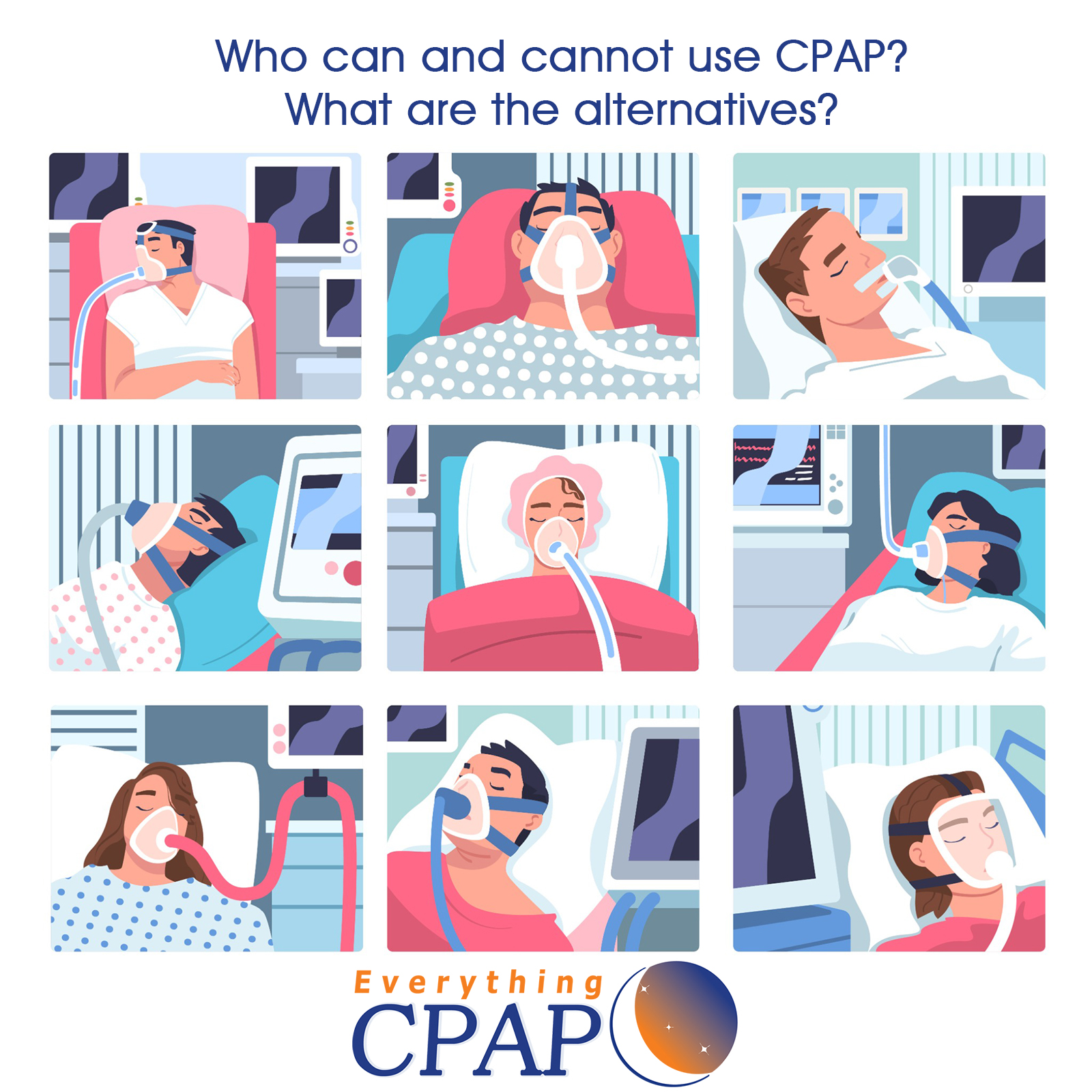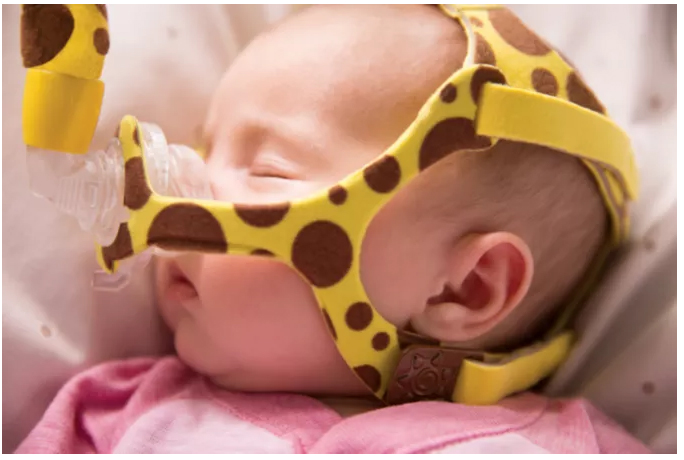Many who say they just cannot wear the mask, are often just dealing with the early phase of adjustment in their CPAP therapy. They may not yet be acclimated to wearing a foreign object on their face during the night … or they are still adjusting to the pressure settings of their CPAP device … or they may even be feeling a dose of claustrophobia with the mask … or may be feeling shyness of wearing the mask in front of others.
While all of those early-stage issues will go away in time, there are in rare cases, some patients who cannot use CPAP therapy as they have comorbidities or pre-existing medical conditions that prohibit them from wearing a CPAP mask properly or tolerating the pressure settings of CPAP devices. What are these conditions and what alternatives are there to CPAP therapy for those with rare but special medical conditions that exempts them from using a CPAP mask or tolerating the pressure of the CPAP device? And we’ll go over common misconceptions of who can and cannot utilize CPAP therapy, and what if any modifications are recommended for those in special medical situations.
Are there AGE Restrictions to CPAP Devices?
Age is not a factor. Patients of all ages can use the device, even newborn babies. And no patient is too old or too young. Patients of all ages can be fitted for a life-saving oxygen mask or nasal cannula, thus newborns to centenarians can use CPAP therapy. Even newborns with respiratory distress have used CPAP as an effective intervention. (NIH)
“Regarding age and weight considerations for pediatric CPAP therapy, it is the position of the AASM that when managed by a clinician with expertise in evaluating and managing pediatric OSA, CPAP can be safe and effective for outpatient treatment of OSA for pediatric patients, even children of younger ages and lower weights.” – Journal of Clinical Sleep Medicine
Can I use CPAP if I am currently using supplemental oxygen?
Oxygen is prescribed for patients who have been diagnosed with respiratory illnesses, like COVID-19, pneumonia, post-surgical recovery, trauma, COPD, emphysema, low blood oxygen (hypoxemia) and other breathing problems. And yes, they can use CPAP therapy too. How? Oxygen can be connected into your CPAP tubing in cases where a physician has prescribed both Oxygen Therapy and CPAP Therapy. How? Those two therapies can be combined using a simple Oxygen Bleed-In Connector. This connector usually connects between the outflow of the CPAP and the CPAP tubing. Then, you connect your Oxygen Tubing to the smaller nipple on the side of the Bleed-in Connector. It can also be connected between the end of your CPAP Tubing and the CPAP Mask.
Can I use CPAP Therapy if I have epilepsy or seizures?
Not only is CPAP Therapy safe for epileptic patients, but it can reduce the occurrence of seizures if the patient is also suffering from OSA.
“At one year, 63% of people treated with PAP reported a 50% or greater reduction in seizures from baseline (before the study began), compared to 14% of those who weren’t treated and 44% of those who did not have OSA. Researchers also assessed overall outcome success, defined as not having seizures at baseline and remaining seizure-free for a year, or having seizures at baseline but reporting a 50% or greater reduction in seizures over one year.” – Sleep Review
Can I use CPAP Therapy with a deviated septum or post deviated-septum surgery?
An estimated 80% of us have a misalignment in the nose that makes one nasal cavity larger than the other, a severe misalignment is called a Deviated Septum, and can make breathing difficult. You can use CPAP with a deviated septum, but you may need to modify the type of mask you choose. Nasal and Nasal Pillow masks may not be as effective since the deviation is causing the airway blockage. The continuous pressure devices may improve the quality of your sleep and even daytime breathing since it can partially clear the deviation. Talk to your physician on what mask type would work best for your degree of deviation.
If you have had rhinoplasty, septoplasty, and other sinus surgery, the majority of surgeons will temporarily stop the use of CPAP after surgery, for an average of one to two weeks post-surgery. There are also a good amount of surgeons who do not recommend pausing CPAP after the procedure, and only minimal complications have been reported. (NIH)
Please Note: A deviated septum does not cause sleep apnea, though it can worsen existing sleep apnea. Correcting the deviation can help make CPAP treatment more tolerable and accessible, but it won’t cure or prevent sleep apnea.
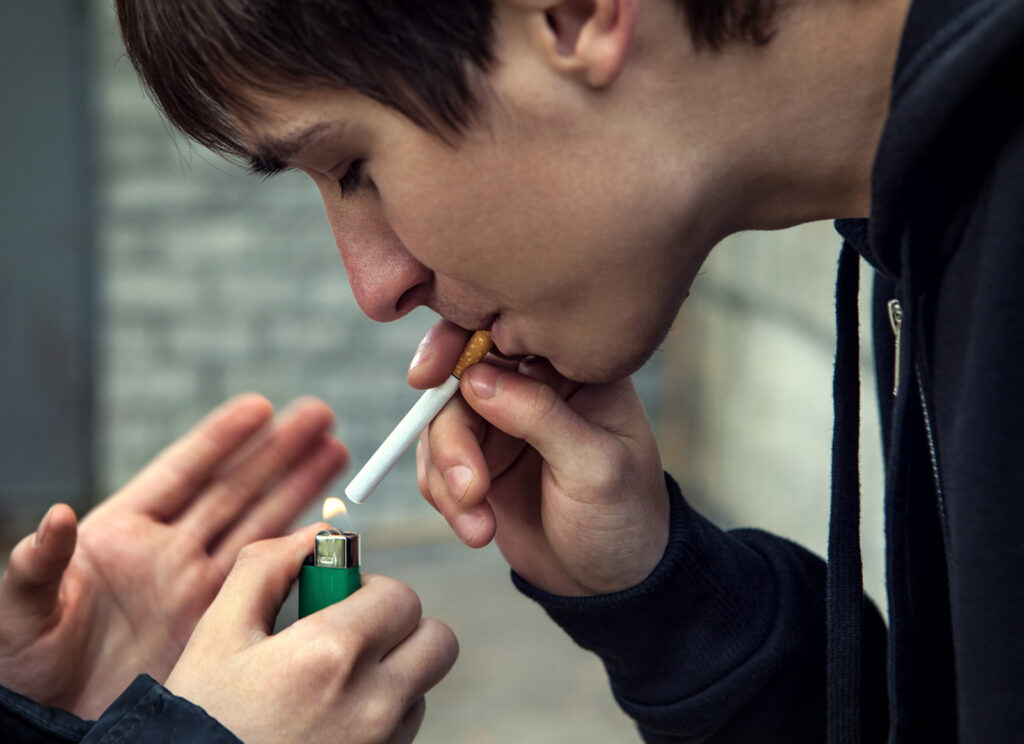
Can I use CPAP Therapy if I am a Smoker?
First off, smoking will only negatively impact your symptoms of sleep apnea because smoking interferes with your body’s natural sleep cycle, and Nicotine causes physiological reactions that awaken your body, induce airway obstruction and inflammation. All of these reasons compromise the effectiveness of your CPAP Therapy.
How about Vaping? For the same reason, vaping still delivers nicotine to your body, and the flavored nicotine has been associated with severe lung disease that is irreversible and will obviously impact your sleep.
Yes, you can use CPAP therapy if you are a smoker or a vaper, and some suggest that starting CPAP can make quitting easier than it would have been without compliance. Not treating OSA with CPAP therapy is made even more dangerous when smoking is involved.
Can I use CPAP Therapy if I suffer from Claustrophobia and Anxiety?
Claustrophobia is the fear of being enclosed in a small space or room and having no escape, which can result in panic attacks and is typically classified as an anxiety disorder. Since claustrophobic patients often have a fear of suffocation, wearing a CPAP mask that covers their nose and/or mouth may be particularly difficult for them. In these cases a nasal pillow or nasal mask, which are minimal contact type masks since they cover less of the face. The nasal and nasal pillow masks may offer the patient greater comfort and security. With behavioral therapy, desensitization, mindfulness and breathing exercise, even aromatherapy, the patient in time can become accustomed and less fearful of any illogical and irrational fears of suffocation. You cannot suffocate from CPAP:
“Since the CPAP machine doesn’t help you breathe or provide oxygen, you won’t suffocate, even if the power goes off. However, without the stream of air propping up your airway, it may feel like you can’t breathe, as well. That’s why some patients like to keep backup battery packs on hand. And you can always remove the mask.” – Mayo Clinic
Can I use CPAP Therapy if I have Air Leak Syndrome (AL)?
What is AL? Air leak (AL) is a clinical phenomenon associated with the leakage or escape of air from a cavity that contains air into spaces that usually, under normal circumstances, do not have air. The terminology air leak syndrome (ALS) is the presence of air leak with associated symptoms of respiratory distress. The escape of air from air containing cavity to non-air containing cavity can create a condition where some vital organs in the non-air containing cavity can be compressed, creating life-threatening conditions. (NIH)
What are the types of Air Leak Syndromes?
- Pneumothorax – the presence of air in the pleural cavity.
- Pneumopericardium – the presence of air in the pericardial sac.
- Pneumoperitoneum – the presence of air in the peritoneal cavity.
- Subcutaneous emphysema – the presence of air in the subcutaneous tissue.
Currently the recommendation is that an alternative to CPAP/BiPAP Therapy should be considered for patients with AL.
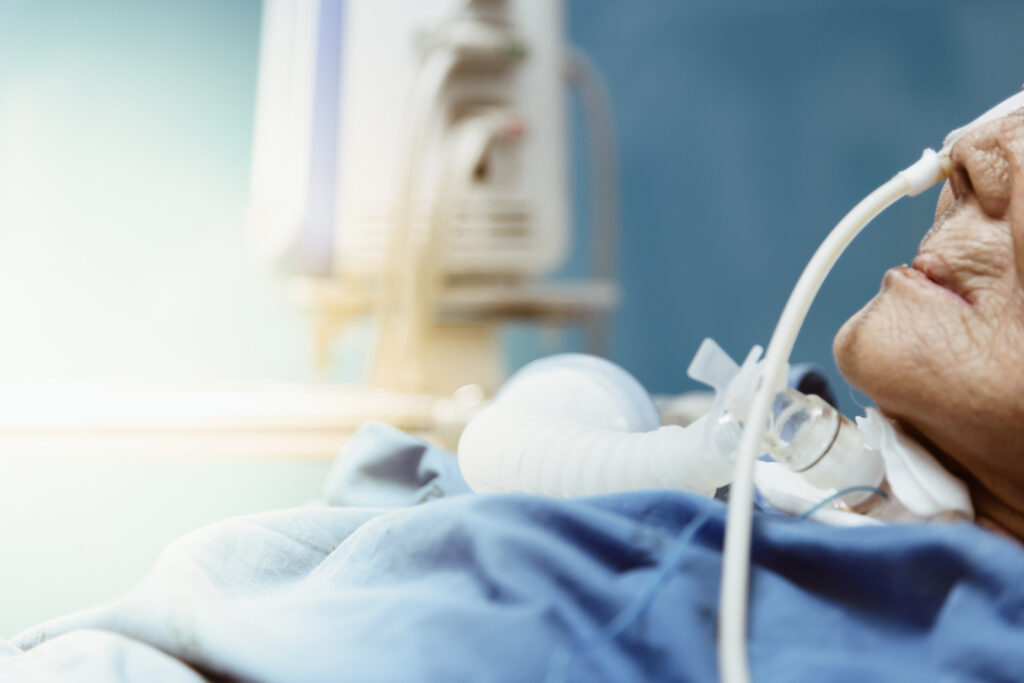
Can I use CPAP Therapy if I have had a Tracheostomy?
Tracheostomy ventilation with CPAP/BIPAP is actually a desired ventilation mode because it’s usually the ventilation mode that’s tolerated best by patients with tracheostomies and mechanical ventilation needs. With a tracheostomy adaptor, your CPAP therapy can still be administered.
What other conditions can reduce the effectiveness or be a contraindication of CPAP Therapy?
- Uncooperative or extremely anxious patient
- Reduced consciousness and inability to protect their airway
- Unstable cardiorespiratory status or respiratory arrest
- Trauma or burns involving the face
- Facial, esophageal, or gastric surgery
- Air leak syndrome (pneumothorax with bronchopleural fistula)
- Copious respiratory secretions
- Severe nausea with vomiting
- Severe air trapping diseases with hypercarbia asthma or chronic obstructive pulmonary disease (COPD)
If I cannot use CPAP, what are the alternatives for treating Sleep Apnea and OSA?
While CPAP therapy is the gold standard of treating Obstructive Sleep Apnea, there are new, innovative alternatives on the market that may decrease the appearance of selected symptoms of OSA. No product is as effective for treating the cause and effects of sleep apnea than CPAP/BiPAP devices and masks, but here are some other options that can be considered.
INSPIRE
According to their website, “Inspire is the only FDA approved obstructive sleep apnea treatment that works inside your body to treat the root cause of sleep apnea with just the click of a button.”
Inspire works like a pacemaker for your tongue, but unlike a pacemaker, Inspire does not connect to your heart. A doctor implants a sensor in your chest which detects when you’re about to take a breath and sends a small electrical signal to the nerve that controls your tongue to move it out of the way for a clearer airway. The pros are that there are no tubes, mask or pressure settings to worry about and is manually controlled by a hand-held remote.
The cons of Inspire is that surgery is required, along with any risks associated with a surgical procedure. Therefore, it’s more invasive than CPAP and the Inspire device lasts about 11 years so it will need to be surgically replaced. Also, with any foreign object implanted in your body there is an increased risk of infection. And patients with Inspire implanted are not approved to receive an MRI of the chest or abdomen, but only for the arms and legs. It is also not approved for those working near an arc welding unit, or for SCUBA diving deeper than 25 meters.
Remede by Zoll
According to their website, “Remedē is a non-mask therapy designed to treat moderate to severe Central Sleep Apnea (CSA) in adults. The remedē System is an implantable system that stimulates a nerve in the chest (phrenic nerve) to send signals to the large muscle that controls breathing (the diaphragm). These signals stimulate breathing in the same way that the brain signals breathing.”
According to the FDA, the new system is not as effective as CPAP Therapy. “In clinical testing involving more than 140 people, a measure of sleep apnea was reduced by at least half among 51 percent of people who used the system. That compared to an 11 percent reduction among those who didn’t have the system implanted.”
The following are risks of use and implantation:
- infection and swelling near the implant site,
- inability to use an MRI machine,
- surgical risks, as well as nerve damage or injury,
- allergic reaction,
- irritation and/or swelling,
- changes in stimulation caused by loose device connections,
- tongue weakness,
- difficulty moving your tongue.
Oral Appliances
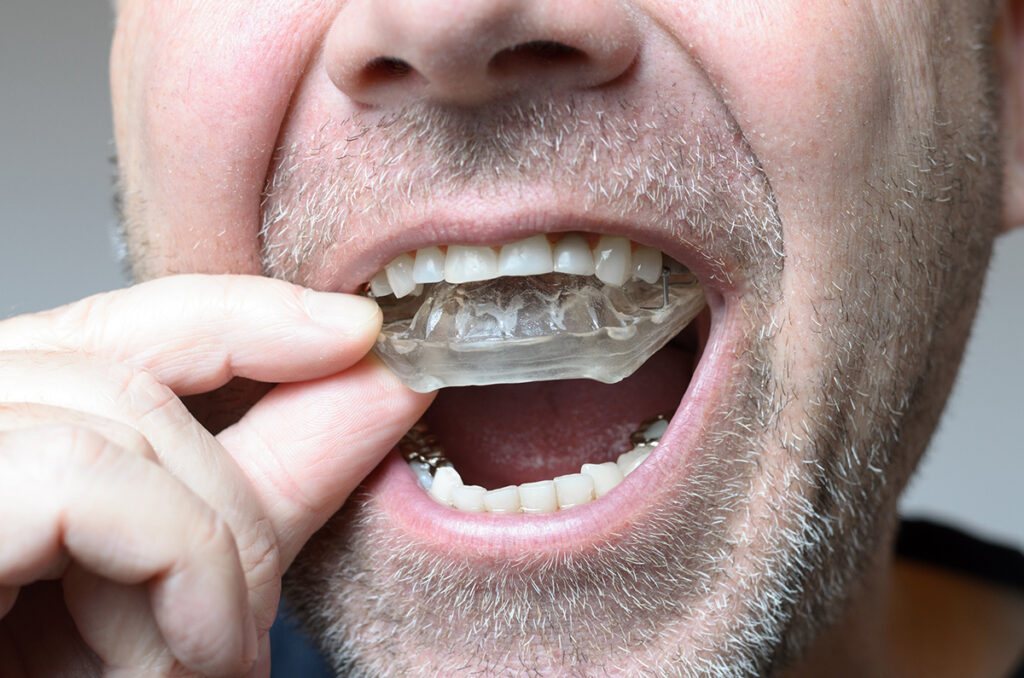
Dental or oral mandibular advancement appliances are another viable option to treat obstructive sleep apnea. These oral devices prevent the tongue from blocking the throat and advance the lower jaw forward to keep the airway open during sleep. If your dentist or sleep physician decide you are a candidate for this treatment, a device will be made specific for the shape and size of your mouth and jaw. After which you will meet with your dentist for a fitting and given a morning repositioner to realign your bite after the appliance is removed each morning.
When using an oral appliance, the patient is responsible for the care and maintenance of the device as you need to regularly clean the device and meet with your doctor for custom adjustments to optimize care. While the pros are that the oral appliance may not be as intrusive as CPAP therapy, the cons include:
- changes to your bite,
- pain in the jaw and teeth,
- loose teeth,
- a potential need for dental work replacement,
- excessive drooling and
- mouth dryness.
The following types of oral devices are available:
Elastic Mandibular Advancement: The EMA (Elastic Mandibular Advancement) appliance is easily adjusted by using different lengths of bands, different levels of hardness or flexibility of the bands. This allows for significant customization of the fit and feel of the appliance.
Hook Style Appliance: This is a good option for those missing molar teeth. The appliance uses a hook and bar system that keeps the jaw from moving back, on a track system that allows adjustments at the jaw position.
Dorsal Style Appliance: Dorsal style appliances have a distinct advantage of having the upper and lower pieces that are not hooked together. This appliance is a good system for those with missing teeth, dentures or feelings of claustrophobia.
Herbsts Style appliance: Herbst appliance was designed as a fixed device that acts as a hinge between the maxilla and the mandible. The hinge was made of silver or gold tubes with corresponding rods that forced the mandible forward, but allowed speech, chewing and swallowing.
Silent Sleep: The only custom fit temporary sleep appliance of its kind, invented by Dr. Jameson Spencer. The Silent Sleep oral appliance is made of GC reline-a soft and comfortable material that is strong. It is ideal for testing protrusive position and can be used over Invisalign or in some cases even other orthotics.
While many other oral appliances on the market help stop snoring, which is a common sign of OSA, it does not treat the root cause of OSA. Most physicians would recommend treating the condition, not just the symptoms for the long-term health and wellness of the patient.
Don’t Rule out CPAP Therapy Just Yet
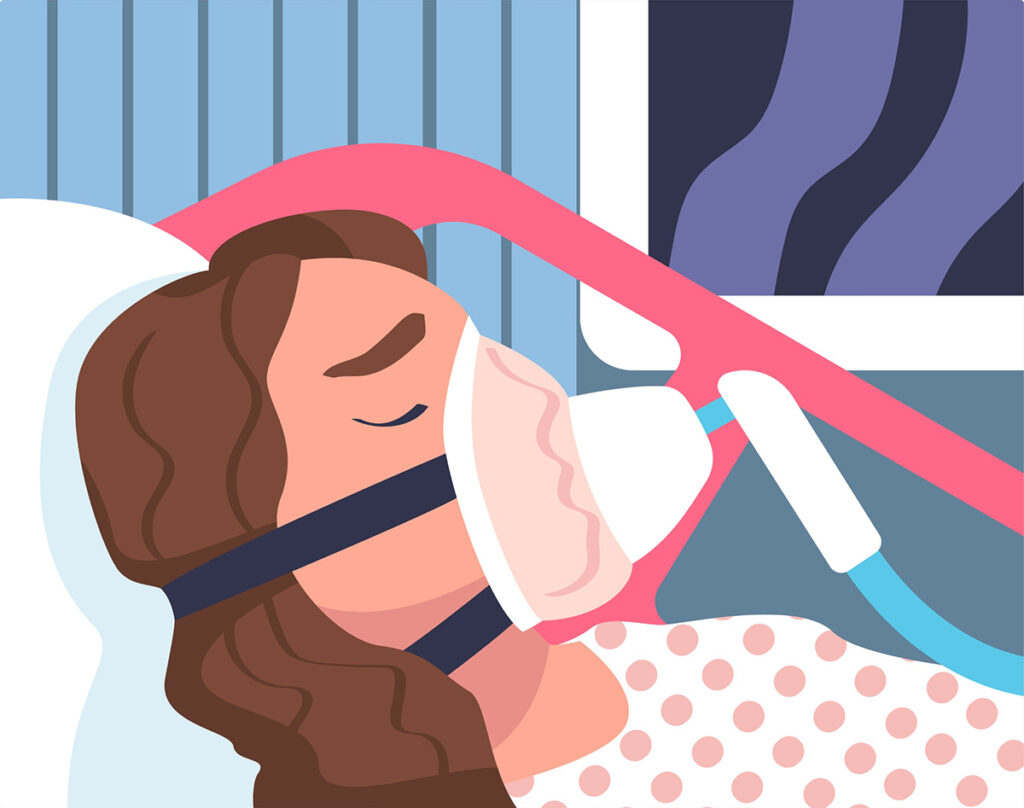
As CPAP Therapy has been utilized since the 1980’s, there has been many improvements over the year to alleviate some of the discomfort and initial adjustment. With the advent of DME Companies, there are sleep technicians and respiratory therapists who provide fittings, training and ongoing assistance in in the first few weeks to 12 months of your CPAP therapy. And with a cognizant and responsive DME provider, like Everything CPAP (link to our About Page) an overall increase adherence has increased over the years. Also, there are now a myriad of CPAP accessories on the market, as well as various options of masks types and models, self-adjusting pressure settings, and many AutoPAP, BiPAP and CPAP devices that have all the bells and whistles to manufacture devices that more user-friendly, more automatic, quieter and portable.
While the biggest hurdle to CPAP users is those first few weeks of adjusting to wear a mask, over time, most CPAP patients will realize the pros outweigh the cons. If a patient is prepared and motivated to stick with it for at least three months, a CPAP patient is more likely to achieve long-term adherence. CPAP Therapy is the most effective treatment for OSA and Sleep Apnea, as it improves the length and quality of life, reduces the risk of diabetes, heart diseases, sleep-related accidents, even cancer. With CPAP Therapy, you will experience better sleep and feel more rested when you wake up.


